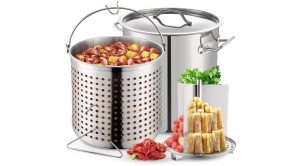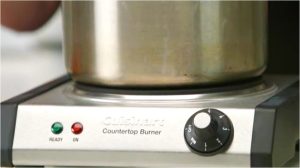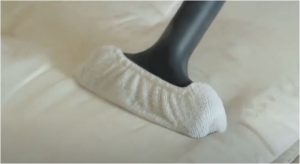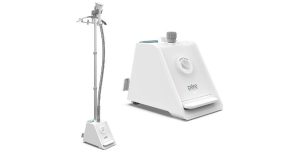Does Steam Cleaning Kill Viruses and Bacteria?
Yes, steam cleaning kills viruses and bacteria. Steam cleaning is an effective method for disinfecting surfaces.
Steam cleaning is a powerful tool for maintaining a clean and healthy environment. By using high-temperature steam, it effectively disinfects surfaces, eliminating harmful pathogens.
Steam cleaning is safe from viruses, as the heat generated during the process destroys their structure, rendering them inactive. This method also checks for viruses, ensuring that surfaces are free from contamination.
The process of steam cleaning not only kills bacteria but also eradicates various germs. Steam cleaners are designed to disinfect surfaces, making them an ideal choice for maintaining hygiene in homes and workplaces.
The high temperature of the steam is capable of killing germs and bacteria, providing a thorough cleaning solution.
Related Post: Steam Kill Bed Bugs And Their Eggs! Here’s How
Steam Cleaning: Benefits and The Processes
Steam cleaners are innovative devices that use the power of high-temperature steam to clean and sanitize various surfaces. They function by heating water to produce steam, which is then directed through a nozzle or attachment onto the surface being cleaned. The heat generated by the steam loosens dirt, grime, and stains, making it easier to remove them from the surface.
Steam cleaning kills bacteria and viruses through a high-temperature cleaning process. This method effectively sanitizes surfaces in minutes.
The steam cleaning process utilizes pressurized steam, typically at least 212° F, to eliminate viruses and bacteria from various surfaces. This high-temperature steam is capable of penetrating even the smallest crevices, ensuring a thorough cleaning.
Steam cleaning is not only effective against bacteria and viruses but also works well in killing mold on mattresses, mold in showers, and mold spores in carpets.
One of the benefits of steam cleaning is its ability to kill germs and bacteria, providing a deep clean without the need for harsh chemicals. This makes it an eco-friendly and safe option for maintaining a clean and healthy environment. The high temperature of the steam is sufficient to destroy the structure of viruses and bacteria, rendering them inactive.
Steam cleaning is also effective in combating mold growth. It can be used to kill mold on mattresses, in showers, and even in carpets. The heat generated during the steam cleaning process destroys mold spores, preventing them from spreading and causing further damage.
The duration of steam exposure required to kill bacteria varies, but generally, it takes only a few minutes for the high-temperature steam to effectively sanitize surfaces.
This makes steam cleaning a quick and efficient method for maintaining cleanliness and hygiene in homes and workplaces.

What Should You Not Steam Clean?
While steam cleaning is an effective and versatile method for maintaining cleanliness, there are certain surfaces and materials that should not be steam cleaned. Here are some examples:
1. Delicate fabrics: Steam cleaning can damage delicate fabrics such as silk, velvet, or thin polyester. These materials may be sensitive to high temperatures and can become discolored or shrink under the intense heat of the steam.
2. Unsealed surfaces: Unsealed hardwood floors, unglazed tiles, or porous surfaces can be damaged by steam cleaning. The steam can penetrate the surface, causing warping, discoloration, or other damage.
3. Electronics: Steam cleaning should not be used on electronic devices or appliances, as moisture and heat can cause short circuits or other damage to the internal components.
4. Water-sensitive materials: Materials such as cardboard, paper, or water-sensitive artwork should not be steam cleaned, as the moisture can cause them to become damaged or disintegrate.
5. Freshly painted surfaces: Steam cleaning should be avoided on freshly painted surfaces, as the heat and moisture can cause the paint to blister or peel.
Learn More: Steam Cleaning Tips & Steps
Some Common Questions and Answers About Steam Cleaning
How Effective Is Steam Cleaning in Killing Viruses and Bacteria?
Steam cleaning is highly effective in killing viruses and bacteria due to the high temperatures it reaches, typically around 212° F or higher. The heat destroys the structure of microorganisms, rendering them inactive and ensuring thorough sanitization of surfaces.
Can Steam Cleaning Be Used on Various Surfaces?
Yes, steam cleaning is versatile and can be used on a wide range of surfaces, including carpets, upholstery, tiles, and mattresses. It is essential to avoid using steam on delicate fabrics, unsealed surfaces, electronics, and water-sensitive materials.
Is Steam Cleaning Eco-Friendly?
Steam cleaning is an eco-friendly option for maintaining cleanliness, as it does not require the use of harsh chemicals. The process relies solely on water and heat, making it safe for both the environment and the user.
How Long Does It Take for Steam Cleaning to Kill Bacteria?
The duration of steam exposure required to kill bacteria varies, but generally, it takes only a few minutes for the high-temperature steam to effectively sanitize surfaces. This makes steam cleaning a quick and efficient method for maintaining cleanliness and hygiene.
Can Steam Cleaning Remove Mold?
Steam cleaning is effective in combating mold growth. It can be used to kill mold on mattresses, in showers, and even in carpets. The heat generated during the steam cleaning process destroys mold spores, preventing them from spreading and causing further damage.
What Are the Benefits of Steam Cleaning?
Steam cleaning offers numerous benefits, including effective sanitization, versatility, eco-friendliness, and the ability to remove stubborn dirt and stains. It is a powerful and chemical-free method for maintaining a clean and healthy environment.
Are There Any Risks Associated with Steam Cleaning?
While steam cleaning is generally safe, there are potential risks associated with using steam on certain materials, such as delicate fabrics, unsealed surfaces, electronics, and water-sensitive materials. It is essential to be aware of these limitations to ensure the safe and effective use of steam cleaning.
Learn More: Using Whole House Humidifiers: Pros and Cons
Final Word
While steam cleaning is a powerful and eco-friendly method for eliminating dirt, bacteria, and viruses from various surfaces, it is essential to be aware of the limitations and potential risks associated with using steam on certain materials. By understanding these restrictions, you can ensure the safe and effective use of steam cleaning in your home or workplace.
Learn More: How to Clean Hot Plate?





